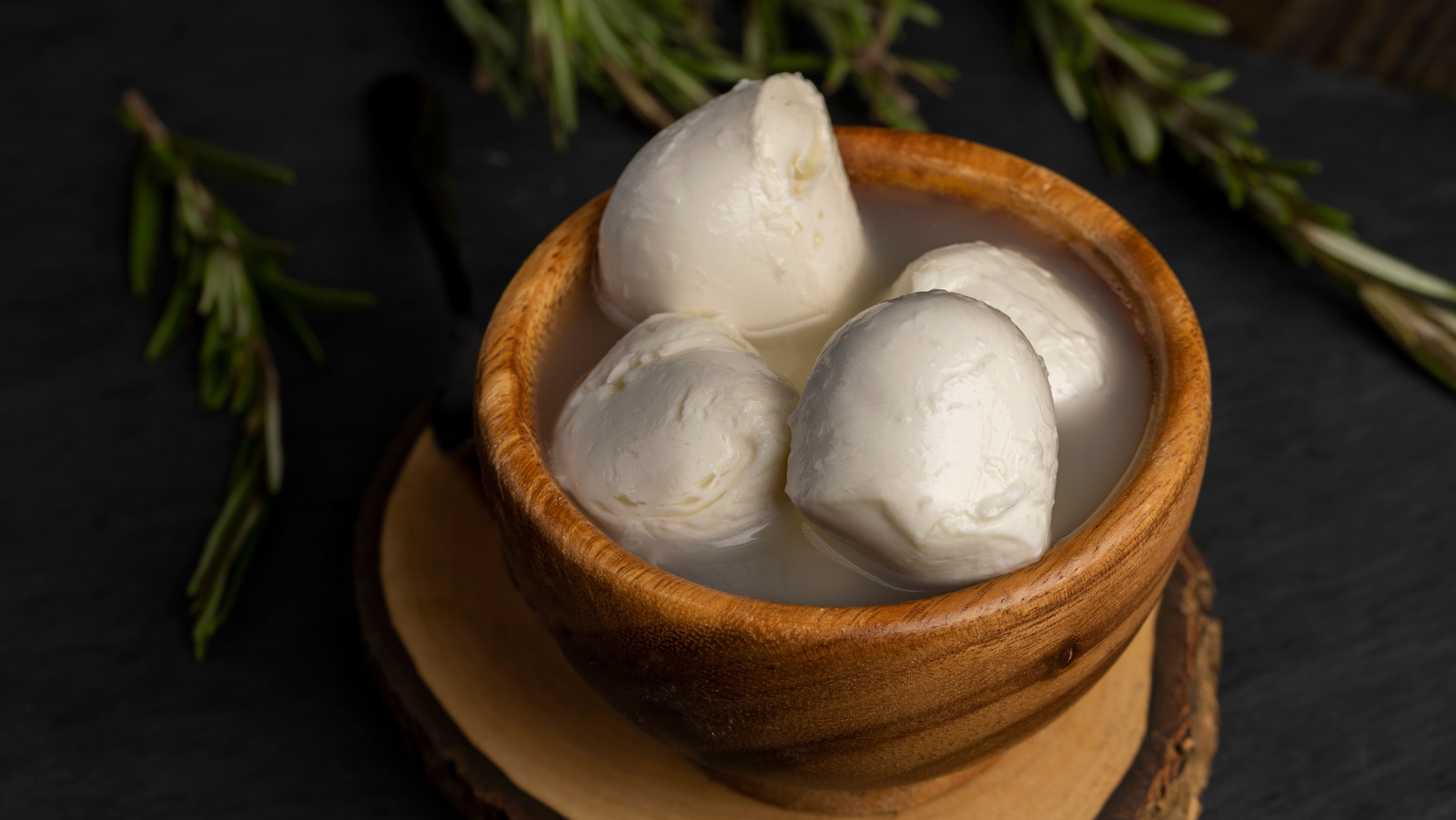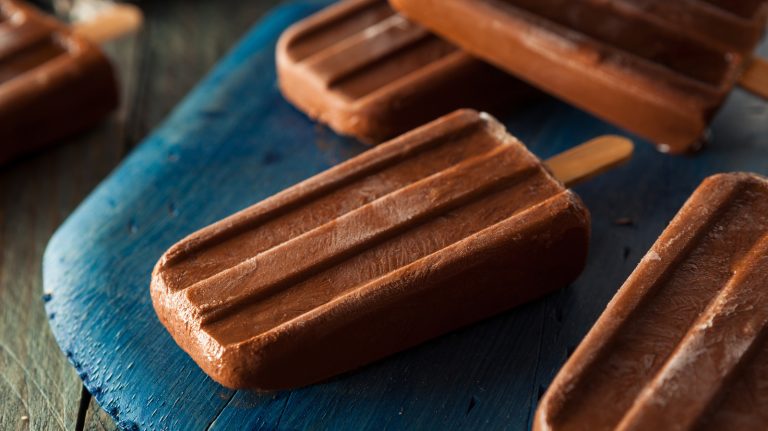Cutting down on food waste has never been easier, especially when mozzarella brine is left over. While some mozzarella is packed in water or even oil with aromatics to add tasting notes, most fresh mozzarella is packaged with salt water. The brine helps to preserve the cheese and gives the mild cheese more flavor. But when you consider that brine is simply very salty water, it unlocks so much potential to be used in other recipes.
Salting water is a key step in cooking all kinds of recipes because the salt helps to add flavor to the prepared food. In many cases, using brine to prepare dishes is as easy as replacing some of the water you would use with the brine. While some recipes might feel like a natural swap, you might be surprised at some dishes that can benefit from brine. From a wide variety of breads to a classic Italian dish, keep your brine close at hand.
Use it to cook rice and make risotto
Cooking rice is one of the easiest (and smartest) ways to use leftover mozzarella brine. Whether you’re hoping to use this technique to cook rice as a side dish or swap it in while you’re making risotto, leftover mozzarella brine is a great option for preparing different kinds of rice dishes. The salty brine can be used in place of some of the water you would use to boil rice, which helps flavor it, or it can be used to replace some of the liquid (such as broth) used to slowly cook and absorb into tender risotto.
One reason mozzarella brine works so well in risotto is that its salt content helps amplify the other ingredients used for flavor. If you’re new to making this dish, there are tons of risotto recipes and variations available on Tasting Table. Try using seasonally available ingredients such as saffron and zucchini during summer months, butternut squash in the fall, mushroom and garlic during winter, or fresh asparagus and broad bean risotto in spring.
Replace the water in bread dough
Whether you’re a beginner or an avid bread maker, consider replacing some of the water in bread recipes with mozzarella brine. The vast majority of bread recipes call for combining sugar and yeast with water before stirring in the salt and flour. You can cut down on the amount of salt and water you’ll need for the recipe while putting the brine to good use by substituting it for its equal amount of water.
Beginner-friendly bread recipes to try this trick with include Neapolitan pizza dough, easy French bread, and ciabatta, which uses a lot of water. In addition to improving the flavor, salt moderates the speed at which yeast ferments in bread and how it rises. Bread also benefits from salt’s impact on gluten development and how the bread browns. In swapping out equal parts water for brine, you’ll still get great results from your bread. Just remember to reduce the amount of salt proportionately to the amount of water you remove. Reducing salt and water when using a brine substitution is important to prevent the bread from tasting too salty.
Pour brine over the top of focaccia before baking
Another type of bread that calls for a lot of delicious, flaky salt (and high-quality olive oil) is focaccia. More specifically, author Samin Nosrat’s Ligurian focaccia , which she discussed on an episode of Bon Appétit’s “It’s Alive,” relies on brine for its perfectly browned, crispy crust. Most focaccia recipes call for salt and water to make the dough; Ligurian focaccia takes it a step further by pouring the brine over the focaccia dough to soak while it completes its final proof. Even then, Nosrat suggests sprinkling the focaccia with flaky sea salt once more before baking it.
Focaccia is an excellent bread for beginner bakers because it is relatively low-maintenance and requires fewer skills. Plus, once you master the basic recipe, you can amp up the flavor with additional ingredients like roasted garlic. If you do add more ingredients to the top of the focaccia before baking, remember to add them after the final proof and brine to prevent the toppings from becoming soggy or inhibiting the rise.
Add brine to boiling pasta water
Even if you only cook pasta at home once in a while, chances are you’ve heard that the water should taste like the ocean. While that might be a bit of an overstatement, pasta water should ideally contain around 1% salinity. This ensures the pasta will be seasoned without taking on too much of a salty flavor. And by using brine to replace some of the water you plan to boil your pasta in, you can get a potent salinity without having to use as much salt in the pot of water.
Properly salting the water ensures the pasta is seasoned from the inside rather than superficially. When you simply salt the pasta after cooking it, you’ll end up with too much salt and simultaneously bland noodles. Pasta that is seasoned well will have better flavor — whether it’s in a bowl of creamy Alfredo, a tray of baked ziti, or a dish like creamy garlic butter noodles, which lets the pasta shine through.
Replace water or broth in soups
Another simple swap to use up mozzarella brine is to replace some water or broth that would be used to make soup. This warm, comforting food requires a lot of liquid, and by using brine, you’ll pack more flavor by seasoning all of the ingredients in the soup. Remember to swap out equal parts broth or water for the amount of brine you add in, and don’t forget to taste the soup as you go to ensure it doesn’t become overpowering as you add more seasonings.
Chicken noodle soup is a classic that can benefit from using brine alongside chicken broth or water. For an unusual recipe with lots of briny flavor, consider making dill pickle soup. Finally, hamburger soup is an easy and satisfying recipe packed with ingredients that can use a boost from salty brine. If you opt to use brine in a creamy soup, make sure you note how much salt the recipe calls for. You won’t want to water down the soup to balance out the brine if it becomes too salty.
Use in the breadcrumb mixture for meatballs
While it might not be the first food that comes to mind for using leftover mozzarella brine, meatballs are another excellent recipe that can benefit from some added saltiness. This unexpected ingredient swap is used in the breadcrumb mixture before forming meatballs and baking them in the oven. When meatballs are paired with roasted tomatoes or even sweet peppers — ingredients with a sweeter, more mellow flavor after they’ve been cooked down — the saltiness of the brine helps to balance the dish.
Using brine in place of water or milk works in a wide variety of Tasting Table’s 12 best meatball recipes. Swedish meatballs are a classic option, and Italian meatballs naturally pair well with mozzarella brine since the cheese is so often used in Italian cuisine. But one recipe that brine works particularly well in is cranberry meatballs because of their sweet and tangy flavor. So get creative with your recipes and consider swapping out liquid for brine whenever recipes call for salt and liquid.





